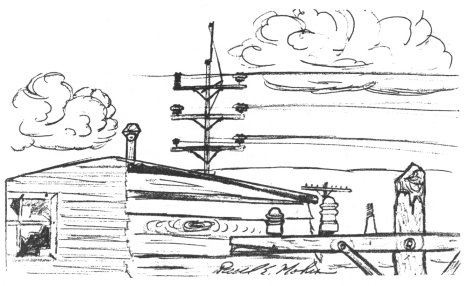Grading Insulators
by Dick Borman
Reprinted from "INSULATORS - Crown Jewels of the Wire", May 1972, page 2
(The following article is reprinted from the February issue of APPLIED SEALS,
the monthly newsletter of the Genesee Valley Bottle Collectors' Association in
Rochester, N. Y. It appeared on pages 3 and 4 in the column titled "From
Pole to Pole".)
How mint is mint? or near-mint, for that matter? This is the question that
plagues any insulator collector when he attempts to describe merchandise for sale or trade. Since the answer to this
question is primarily a matter of individual judgment and experience, this writer can do no more than state his
personal feelings on the subject.
When preparing a trade list I generally use four classification! mint, very near mint, near mint, and damaged. Let's review them one at a time and attempt to
clarify them.
Mint. Taken literally this is just as they left the factory. Since most
insulators offered to collectors have been in use, they have been subject to the
ravages of weather, wire-wear, dust, dirt, etc., and therefore may not have a
factory-fresh sheen or may posses an occasional stress mark, particularly in the
area of the threads. In general if an insulator shows these normal signs of
wear, but is free from damage such as chips, nicks, dings, cracks or major
stains, I call it mint. Mass production of insulators, particularly older ones,
often caused roughness at the mold edges, small bubble breaks, or imperfectly
formed drip points. Unless these factory imperfections are beyond the norm, it's
mint. Anything beyond, especially in an expensive insulator, should be
described as fully as possible.
Very Near Mint (VNM). An insulator listed this way should still be a very
choice item yet may posses a very small wire mark, ding, nick, or crack, usually
in a fairly inconspicuous place and would to all intents and purposes display
mint. You will find many in this category, since linemen, the weather, and
hunters of all ages were not always kind to insulators.
Near Mint (NM). Here we find the widest range of opinions, so here goes
my neck out again! A near mint insulator may have such things as an inner skirt
chip, a couple of dings, a fairly small chip anywhere on the insulator, some
drip point damage (insulators with perfect sharp drip points are extremely
difficult to find), a bruise, or even combinations of the above. As a rule a
near mint insulator should be expected to display quite well, hopefully mint,
from one side. A large gouge, a crack, or heavy staining do not make it near
mint in my book.
Damaged. Here we can describe them in a variety of ways, but we're
talking about something less than near mint. Frequently-used terms are "minor damage", "base chips",
"base damage", or "cracked", but unless you have a lot of them in this shape at a wholesale price, you're generally better off describing
the damage in finer detail. Unless described otherwise, even insulators in this
category should be expected to display reasonably well, perhaps near mint from
one side. There are some insulators we all run into that are pretty rough, and
unless they're a real scarce item probably should be considered a
"wipeout" or else described as being in poor condition.
A few more points worthy of consideration are as follows:
1. Since truly mint insulators, especially to the very critical eye, are hard to
come by, it's tough to positively guarantee an insulator to be mint. My
particular policy is to guarantee them mint or very near mint unless specified
otherwise.
2. In conjunction with the point above, every sale or trade should be
accompanied by a return privilege within a reasonable period of time, usually a
week or ten days. Both parties should be assured of satisfaction before a deal
becomes complete.
3. On a rare or high-priced insulator, I feel that anything less than mint
should be described in detail--not only the extent, but the location of any
damage. When investing a large amount of cash or a piece of good glass in an
item, I feel obliged to give and receive the full story.
4. Before mailing a trade or sale ask yourself this question: "Would I be
happy to receive this item at the price (or trade) as described?"

Sketch by Paul E. Mohrs
|
